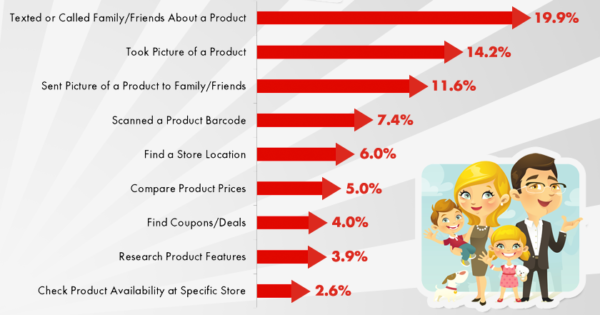IAB: Houston Tops List Of Mobile Shopping Cities; San Francisco Fails To Make Top 10
“Space City” Houston ranks number one on the Interactive Advertising Bureau’s list of mobile shopping cities, followed by New York, Atlanta, Los Angeles and Dallas-Fort Worth. The industry group looked at mobile phone ownership, the influence of mobile coupons and ownership of mobile retail and social media applications when putting together its rankings. Surprisingly, uber-tech-savvy […]
“Space City” Houston ranks number one on the Interactive Advertising Bureau’s list of mobile shopping cities, followed by New York, Atlanta, Los Angeles and Dallas-Fort Worth. The industry group looked at mobile phone ownership, the influence of mobile coupons and ownership of mobile retail and social media applications when putting together its rankings.
Surprisingly, uber-tech-savvy San Francisco didn’t make the top 10, coming in at 11 in the rankings.
The results suggest that marketers trying to reach consumers in the top-ranked metro areas should prioritize efforts to make their online presences more mobile friendly. Bricks-and-mortar retailers in those areas could also make it easier to do price comparisons or perform other mobile tasks in their stores, perhaps using QR codes or something similar. National retailers should prioritize initiatives in the mobile-shopping-heavy metro areas.
The IAB’s rankings were corroborated somewhat by eBay’s PayPal division, which reported that mobile users in New York, Houston and Los Angeles were among the biggest shoppers through their payment service on Black Friday this year.
What do these mobile shoppers do? Overall, they find store locations (15.1%), compare product prices (9.8%), find coupons and deals (9.5%), research product features (9.1%), check product availability at a specific store (8%), or access daily deal services (7.7%).
 Mobile-savvy shoppers continue their mobile activities when they’re in retail locations. They text or call family or friends about a product (19.9%), took a picture of a product (14.2%), sent a picture of a product to family or friends (11.6%), scanned a product bar code (7.4%), found a store location (6%), compared product prices (5%), found coupons or deals (4%), researched product features (3.9%), or checked product availability at a specific store (2.6%).
Mobile-savvy shoppers continue their mobile activities when they’re in retail locations. They text or call family or friends about a product (19.9%), took a picture of a product (14.2%), sent a picture of a product to family or friends (11.6%), scanned a product bar code (7.4%), found a store location (6%), compared product prices (5%), found coupons or deals (4%), researched product features (3.9%), or checked product availability at a specific store (2.6%).
Mobile shopping consumers are much younger than the mobile average, with 61 percent of them under 34. Thirty-seven percent of all U.S. mobile users fall into that age group. They also have slightly higher incomes, on average. Forty-eight percent earn over $75K a year, with only 42 percent of all U.S. mobile users earning that much.
The Top Fifteen Mobile Shopping Cities:
- Houston
- New York
- Atlanta
- Los Angeles
- Dallas-Fort Worth
- Tampa-St. Pete
- Chicago
- Philadelphia
- Washington, DC.
- Seattle-Tacoma
- SF Bay Area
- Boston
- Detroit
- Minneapolis St. Paul
- Phoenix
MarTech is owned by Semrush. We remain committed to providing high-quality coverage of marketing topics. Unless otherwise noted, this page’s content was written by either an employee or a paid contractor of Semrush Inc.
Related stories
New on MarTech

